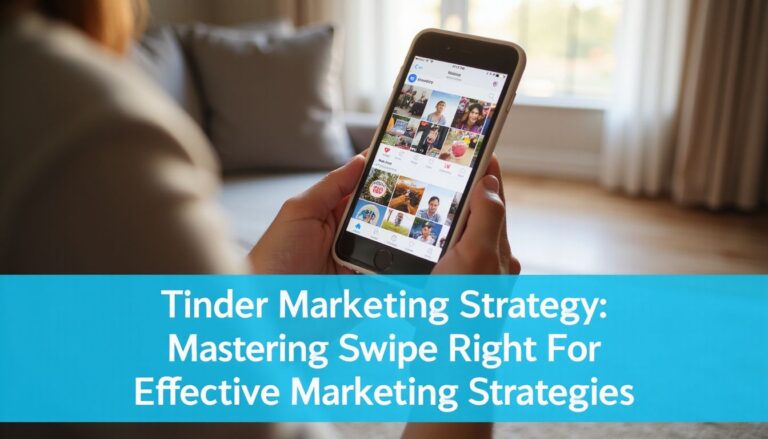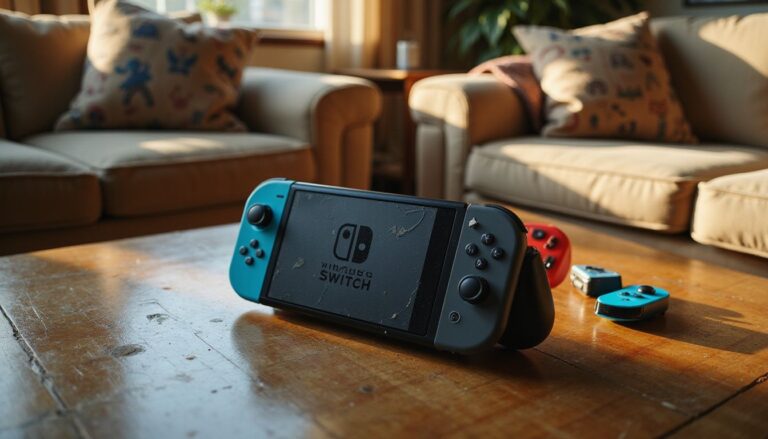Do you feel frustrated seeing Samsung’s ads everywhere, while your own marketing doesn’t get noticed? I had the same challenges and took time to study Samsung’s marketing approach.
I learned they combine creativity with clear insights about what customers truly want. 2 In this post, I’ll show real examples of how Samsung builds successful ads and grows their global presence. 3 Keep reading for practical ideas you can apply right now!
Key Takeaways
- Samsung spends about $20 billion each year on research—to build tech that solves real issues, not just looking cool.
- They offer different products for different life stages, like trendy phones for younger folks and handy home appliances for families just starting out.
- Their “Do What You Can’t” ad campaign starred YouTube creator Casey Neistat—and clicked with millions of young, tech-focused fans.
- Samsung works with big names like BTS and Blackpink, using their star power to introduce gadgets and connect with global fans.
- Samsung products reach customers in over 120 countries, tweaking ads and products to fit local tastes—but always keeping the brand consistent.
Core Objectives of Samsung’s Marketing Strategy

Samsung aims to win in the global market through clear goals. These goals drive their ads, social media posts, and product launches each year.
Strengthening Brand Loyalty
I’ve noticed brand loyalty is central to Samsung’s marketing strategy. 1 They build trust by delivering quality products and offering quick support whenever customers have issues.
The company’s main goal is clear—stay connected with users and adapt as markets shift, maintaining strong customer ties. 2 From what I’ve seen, they craft special deals, designed around your personal needs—with ads talking right to you, instead of broad, generic pitches.
This approach helps customers feel uniquely valued and clearly understood. And it works. Loyal customers often stick around, picking up the newest phones, TVs, and home devices as soon as they’re released.
Increasing Global Presence
Samsung’s global reach is central to its strategy. Right now, the brand sells products in over 120 countries—that’s pretty impressive. 4 This wide market presence helps Samsung stay ahead of other big tech companies.
My visits to stores in Asia, Europe, and the Americas made one thing clear: Samsung connects across very different cultures. To enter new markets quickly, Samsung teams up smartly with local companies.
These partnerships help Samsung understand exactly what local buyers really want. 3 The company adapts its ads and products to match local tastes—all while holding onto its core brand values.
This approach—a global view paired with local insight—helps Samsung truly stand apart in a crowded industry.
Enhancing Product Innovation
Product innovation sits right at the center of Samsung’s success. Each year, the company invests a staggering $20 billion in research and development—funding that goes straight into creating tech people actually care about.
They aren’t only building phones, they’re building tools that solve everyday problems. Samsung stays focused on practical user needs, instead of flashy features. Their approach has led to breakthroughs like the Galaxy phone series, winning loyal fans who keep coming back. 5
Visiting Samsung stores, you quickly notice new features placed front and center for people to explore. Customers can pick up, test out, and see for themselves—building trust in the promises Samsung makes.
The company also listens closely to user feedback, tweaking designs to improve each product. Behind the scenes, Samsung’s research teams stay busy tracking market shifts. They aim to stay ahead of rivals like Apple—with fresh ideas and smarter solutions.
Advancing Environmental Sustainability
Samsung puts real thought into going green across its whole business… using eco-friendly materials and recyclable packaging to reduce waste. 6 They publish clear sustainability reports to show exactly how they’re helping the environment.
A big highlight is their device recycling program, where customers easily turn in old phones and gadgets instead of tossing them. A clever idea, helping Samsung boost brand image and do real good for the planet.
You see this green mindset clearly in Samsung’s marketing too—they focus less on fancy features and more on energy-saving designs that last. 7 It connects well with today’s consumers, who like buying from brands that care.
This pairing of smart innovation with environmental awareness gives Samsung a strong advantage in a tough electronics market.
Characteristics of Samsung’s Target Audience
Samsung knows who they want to buy their products – from teens who love new tech to adults who need smart devices for work and home – and I’ll show you how they reach each group with perfect messages that make people want to click “buy now.
Demographic Analysis
I’ve analyzed Samsung’s target markets and found clear patterns in who they aim to reach. Their approach splits customers into specific age groups for different product lines. 8
| Demographic Factor | IT & Mobile Communications | Consumer Electronics & Device Solutions |
|---|---|---|
| Age Range | 18-65 years | 25-60 years |
| Gender | Both male and female | Both male and female |
| Life-Cycle Focus | Young adults, professionals | Newly married couples, empty nesters |
| Income Level | Middle to upper income | Middle to upper income |
| Tech Adoption | Early adopters to mainstream users | Value-focused buyers to premium seekers |
The company creates different tech for various life stages. My research shows they target young adults with phones and wearables, while home appliances aim at new families. 2 Their wide age range (18-65) helps them capture more market share than brands with narrower focus. The equal focus on both genders marks a shift from past tech marketing that often leaned male.
Psychographic Analysis
I studied how Samsung targets customers based on lifestyle and values—not simply income level. 9 My research found Samsung focuses mostly on middle- and upper-class buyers, tech enthusiasts eager for innovation.
These customers care deeply about status, staying ahead, and owning the latest gadgets.
Samsung divides their audience into two main groups: loyal fans and “switchers”. Loyal fans break down further into “hardcore”—folks who always buy the newest Samsung product—and “softcore”, who prefer Samsung but occasionally explore other brands.
Switchers are less committed; they jump between Samsung and competitors depending on what’s attractive at the moment.
Samsung creates smart, targeted marketing for each segment. They use social media strategies, personalized messaging, and content made specifically for what each group values most.
Effective Marketing Strategies of Samsung
Samsung’s smart marketing moves have made them a top player in tech – from cool product launches to team-ups with big names, they know how to grab our attention! Read on to see how they win customers through social media, digital ads, and famous faces.
Emphasizing Product Innovation and Diversification
My focus is on how Samsung keeps innovation at the center of its growth. The tech giant stays ahead by creating new, exciting products people actually want. Phones, TVs, wearable devices—they make products that grab attention in stores.
Having fresh ideas helps Samsung stay ahead of rivals like Apple and Google. Plus, they’re not limited to one gadget—they branch into multiple tech markets. 5
Samsung uses a mix of premium pricing and fair value to sell their products. Each device offers unique features that customers can’t easily find elsewhere. By balancing clever pricing with attractive features, Samsung keeps consumers interested and loyal.
I’ve noticed the brand often partners with celebrities—like BTS and Blackpink—to showcase new gadgets. Collaborations like these raise visibility and boost interest in their latest tech.
Developing Strategic Partnerships and Sponsorships
Samsung is big on innovation—but just as important are the partnerships they form. Working closely with other companies helps them expand reach, build better products, and keep customers interested. Here’s how they do it:
- They team up regularly with tech startups, creating fresh, standout products for people who want something new.
- Big telecom companies like Verizon and AT&T partner with Samsung, offering attractive phone deals to pull in more buyers.
- Sponsorships like the Olympic Games help Samsung put its logo in front of millions—sports fans worldwide quickly become familiar with their brand.
- Retail partners such as Best Buy give Samsung products prime shelf locations, so shoppers can easily test devices in-store.
- Samsung also works closely with movie studios, placing their devices in movies and popular shows, giving viewers real-life examples of their tech in action.
- Fashion brands collaborate with Samsung to give their products some extra style—appealing directly to buyers who care about design and trends.
- College campus programs help Samsung connect with younger users early, aiming to build loyalty down the road.
- App developers create special features exclusively for Samsung phones, making their devices more attractive compared to competitors.
- Gaming companies like Epic Games—the team behind Fortnite—partner with Samsung, helping the company reach gamers, a growing audience.
- They also work with payment platforms, making sure Samsung Pay is accepted widely, allowing people to use their phones in more locations.
- Samsung actively sponsors music festivals and concerts, boosting their “cool factor” among younger crowds.
- Finally, partnering with local businesses in new places helps Samsung quickly understand different cultural tastes and offer products that people really want. 10
Leveraging Digital Marketing and Social Media
Beyond partnerships, I’ve noticed how Samsung crushes it online. Their digital presence is impressive—with millions of followers on Facebook, Twitter, YouTube, and Instagram. 10 They launched popular campaigns like #YouMake, sparking conversation everywhere.
Their commercial “Growing Up” nailed social media trends and became a major success. These clever digital moves delivered results—Samsung’s brand value soared by over 200% from 2003 to 2008!
Social media gives Samsung direct connections to fans all over the globe. The company regularly shares product news, responds quickly to comments, and posts fan-made content, building a strong community vibe. 11 Conversations flow in both directions, helping Samsung figure out what customers like, dislike, or want improved. The content includes engaging videos, practical how-to guides, and playful challenges—making followers eager to connect, comment, and share.
Utilizing Influencer Marketing Techniques
Social media connects brands directly with fans—and Samsung really steps it up with star appeal. I’ve noticed Samsung working closely with global celebrities like BTS, tapping into their huge fanbase.
Smart move—this puts Samsung right in front of millions worldwide. And they’re not shy about spending big bucks on high-profile celebrity ads either. 5
Samsung also targets specific fan groups. For example, to grab the attention of music fans, they released the Galaxy A80 Blackpink Edition aimed directly at followers of the popular girl group.
Clearly, Samsung knows exactly who they’re talking to here. They match influencers carefully with brand values, choosing stars that genuinely relate to their customers. This approach helps Samsung grab attention, even in a very crowded tech field. 12
Highlighted Samsung Marketing Initiatives
Samsung’s marketing campaigns show their genius in action. I want to walk you through some of their best work that made waves across the world.
“Do What You Can’t” Initiative
I’m a big fan of Samsung’s “Do What You Can’t” campaign—it’s bold, pushes limits, and inspires action. The campaign partnered with popular YouTuber Casey Neistat, grabbing the attention of millions of tech-savvy viewers.
At its heart, the idea encourages people to break through personal barriers using Samsung devices. 13 It’s about building connections and sparking emotions, rather than just selling phones.
Real-life stories show how people achieve amazing things with Samsung technology—bringing the whole concept to life. This approach helps Samsung pop in a crowded market, where smartphones often seem pretty much the same.
The message clicks with younger customers, who respond to brands that motivate and empower them.
Through videos and social media, the campaign strengthened Samsung’s image as a fresh, creative brand that helps people accomplish more.
“Join the Flip Side” Initiative
Samsung really nailed it with the “Join The Flip Side” campaign—bold, fresh, and smartly competitive. The ads directly challenge Apple while spotlighting Samsung’s sleek foldable phones.
They cleverly highlight features Apple misses, setting Samsung clearly apart. And with an annual U.S. ad budget of $2.57 billion—they aren’t shy about reaching potential buyers. 14
The campaign showcases Samsung’s newest folding tech and shows users how much more these stylish devices can do. Ads run everywhere—TV, social media, online—working seamlessly to grab attention.
It’s a refreshing way for Samsung to break away from the usual phones flooding the market. This move boosts brand loyalty too, attracting tech-savvy users looking for a fresh experience. 13
“Look at Me” Initiative
I really appreciate what Samsung did with the “Look at Me” app—creating a cool tool to help kids with autism. The app teaches important skills, like making eye contact and recognizing emotions—two things that can be pretty tough for many children on the autism spectrum.
Clearly, Samsung cares about making an impact in people’s lives, not just selling more phones. 5 Parents and teachers also benefit, getting a simple digital resource to support kids day-to-day.
Unlike typical tech campaigns that focus only on products, “Look at Me” actually tackles real-life needs. Samsung used their tech skills to address something truly important—the challenges autistic children face in social interaction.
This smart blend of innovation and genuine social impact explains why people connect so strongly with Samsung’s marketing. There’s a useful lesson in this thoughtful approach to advertising. 14
How Does Samsung’s Marketing Strategy Compare to Nintendo’s Success with the Switch?
Samsung’s extensive global outreach contrasts sharply with Nintendo’s focused campaigns. While Samsung leverages broad advertising platforms, Nintendo switch marketing success strategies emphasize community engagement and nostalgia. This targeted approach has fostered a loyal fan base, proving that sometimes, connecting deeply with consumers trumps sheer volume in marketing.
Conclusion
Samsung makes waves in marketing with fresh, bold ideas. I’ve checked out their ads, and they blend tech smoothly with daily life. They gain loyal fans through powerful social media moves, clever partnerships, and ads that grab your emotions.
Samsung often figures out what we need—even before we realize it ourselves. That’s what really sets them apart. Their wins show effective marketing stays current, yet always connects to people’s real interests.
References
- ^ https://businessmodelanalyst.com/samsung-marketing-strategy/?srsltid=AfmBOoosgzbe-I0TN_j6lGVb-UZE2iNxaAU9Xf6J59RE5DITlFYJED_9 (2024-12-25)
- ^ https://www.marstudio.com/blog/2024/01/samsung-market-strategy/
- ^ https://businessmodelanalyst.com/samsung-marketing-strategy/?srsltid=AfmBOooCImdyAP0oa2J-Y6d6yQCwuN6HGx6cVksWilfqkdXkjBNr6-0O (2024-12-25)
- ^ https://businessmodelanalyst.com/samsung-marketing-strategy/?srsltid=AfmBOop53s2QmiTAACBrhmAtKca5N92ihTHGX3L9hBVW_UNZPrCxlReE
- ^ https://buildd.co/marketing/samsung-marketing-strategy
- ^ https://businessmodelanalyst.com/samsung-marketing-strategy/?srsltid=AfmBOorQr6xf7_b8_7S5rJdctm8SWbIUQNQHjiDD3zIJ-eCuOw3FEQAY (2024-12-25)
- ^ https://www.samsung.com/global/sustainability/media/pdf/Samsung_Electronics_Sustainability_Report_2023_ENG.pdf
- ^ https://www.edrawmind.com/article/samsung-segmentation-targeting-and-positioning.html
- ^ https://www.researchgate.net/publication/366303536_The_Marketing_Strategy_of_Samsung_Analysis_Based_on_Consumer_Behavior
- ^ https://www.simplilearn.com/tutorials/marketing-case-studies-tutorial/samsung-marketing-strategy (2023-10-30)
- ^ https://www.sciencedirect.com/science/article/pii/S0268401220308082
- ^ https://businessmodelanalyst.com/samsung-marketing-strategy/?srsltid=AfmBOopNBlFrq1WD2ktN8aOmFniZmjNI-jwfxYTMezDq59sfaXWCs2vs (2024-12-25)
- ^ https://rdsdigital.in/marketing-strategy-of-samsung-a-comprehensive-analysis/
- ^ https://www.engagebay.com/blog/samsung-marketing-strategy/ (2024-08-29)







